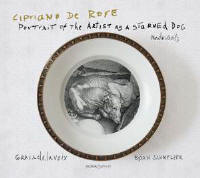Texte paru dans: / Appeared in: |
|
|
Outil de traduction (Très approximatif) |
|
|
Reviewer:
Fabrice Fitch By the standards of some earlier recordings the asperities of Graindelavoix’s tone production are attenuated; expressive slides and ornaments reflect the inner torment that Schmelzer sees as the defining element of Rore’s artistic personality. (His insights into the performance challenges it represents are worth reflecting on.) It seems to me that the ensemble is at its best a cappella or with plucked continuo (these two options accounting for the majority of selections). The more artificial the choices, the less they convince – as with the rendering of the canonic voices in the early Ariosto settings or the instrumental renderings of individual pieces preceding the vocal performance. As to the cornett-playing that punctuates the recital, it suffers in comparison with the fluency of the voices. There is greatest confidence in the pieces of (shall we say) standard madrigal length; in the lengthier setting of Virgil it is more difficult to maintain the same level of intensity throughout. This last piece had me wondering what Concerto Italiano might do with Rore. It is instructive, for instance, that Graindelavoix appear not to emulate the text-fragmented rubato of Rinaldo Alessandrini, another director with a reputation for iconoclasm. One comes away feeling that, of the two, it is the Italian who is the more radical. |
|




